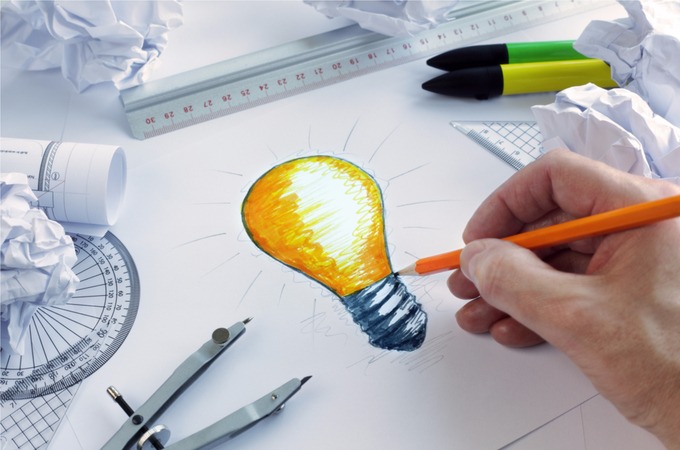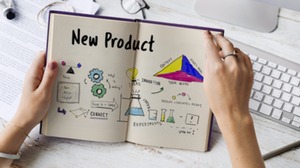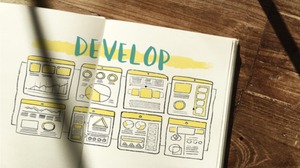A (near-universal) truth in manufacturing: A finished product will only be as good as the design from which it was created. Does that seem like common sense? Let’s look a little more closely at the statement — and then at some reasons why it might not be quite as simple as it seems.
 By a “good” product, we mean a successful one: of high quality, useful to the buyer, safe and profitable for you. In terms of the “design” used to create the product, we’re really talking about the product design process: The early stage of product development where you flesh out your initial concept and create a workable design to use for prototyping, testing and production. It’s more than just moving from concept sketch to CAD drawing — it should be a product design process.
By a “good” product, we mean a successful one: of high quality, useful to the buyer, safe and profitable for you. In terms of the “design” used to create the product, we’re really talking about the product design process: The early stage of product development where you flesh out your initial concept and create a workable design to use for prototyping, testing and production. It’s more than just moving from concept sketch to CAD drawing — it should be a product design process.
That’s not to say it needs to be complicated, but it should involve research, best practices and consideration for the next steps in product development. All too often, however, those aspects of the process are overlooked, whether due to time constraints, underestimation of the importance of design, or overeagerness to proceed to more concrete stages of production.
To make it easier to streamline and cover all your bases in product design and development — making a successful product that is much easier to attain — we’ve assembled some product design tips for you to consult in the beginning stages of a development cycle.
Know the Relevant Best Design Practices
Although the following points may all fall under the broad “best practices” umbrella, it’s important to know more specific and material design practices as you refine your concept. In general, for instance, it’s best to keep your design as simple as possible and still able to achieve the intended result of the product. While this doesn’t mean that your design will necessarily be “simple,” it’s a good philosophy to help eliminate unnecessary or extraneous functions and features that can only complicate your design.
You’ll also want to start looking at best practices for the manufacturing process (or processes) that you’re considering for production. Injection molding, for example, will have different optimal design elements from CNC machining.
Understand Your Product
 “Hold on,” you might say. “It’s my product, why wouldn’t I understand it?” It’s a fair question, and this tip is designed to inspire you to take an even closer look at every aspect of your product. Does every part of your design have a purpose? Do you understand all the ways in which your product might be used? If it’s a component of another device or machine, do you understand the full scope of how your piece will interact with all others, and how it works within the machine in general?
“Hold on,” you might say. “It’s my product, why wouldn’t I understand it?” It’s a fair question, and this tip is designed to inspire you to take an even closer look at every aspect of your product. Does every part of your design have a purpose? Do you understand all the ways in which your product might be used? If it’s a component of another device or machine, do you understand the full scope of how your piece will interact with all others, and how it works within the machine in general?
Getting into those details — while simultaneously looking more at the big picture of your product or part’s role — will help you design more successfully, leaving fewer variables or areas that might need to be rethought, modified or redesigned later. It will also help you create a more practical and useful product.
Understand Your Users (and the Market)
Similar to the above, it’s important to understand the intricacies of the market or markets into which you intend to sell your product; as well as those of the buyers who will be making purchasing decisions, and the users who will be using or operating your product. Knowing the market is your best advantage in the bottom-line implications of creating, manufacturing and introducing your product for purchase. Some basic market research can be very useful here:
- What is the current demand for similar products, from a financial perspective?
- Is there room in the market for your product?
- How is it different from existing offerings?
- What does it do that other similar products don’t?
- Why would a buyer or consumer choose your product over another?
Researching the market at a macro level is one side of this equation. Understanding buyers and users is the other. Try to find out the pain points for the potential users of your product, and how you can help solve those problems. For industrial parts and components, research all possible industries and uses for your product — you may discover unexpected uses (and additional sell-in potential).
Iterate Early
Take advantage of your commitment to the product design process to create several conceptual iterations for your piece. Why? It’s infinitely more cost-effective to explore options at this stage than once you move into production, which could require additional tooling, machine downtime and other unprofitable activity. Look at potential ways to optimize your product, take advantage of the unique properties of different production processes, and explore ways to simplify your design as much as possible. There’s much less financial risk and exposure in spending some time looking at different options during design, even as opposed to other early production stages like prototyping (where, it should be remembered, iteration is also very useful — just not quite as cost effective).
Design for Manufacture (and All Other Future Stages)
Although the product design process occurs at the beginning of product development, you should take the opportunity to take an overall view of the process, right up to manufacturing itself — and even past that step. Making use of design best practices will help you have a more optimally manufacturable product, creating bottom-line benefits for you with higher-quality efficiency and fewer rejected parts.
 It’s also helpful to look at secondary aspects of your product, like packaging, warehousing and fulfillment. They all require investments that can make a big dent in your bottom line if not properly addressed. You should also think about the potential to scale your product for future production runs, especially if it proves to be very successful. Will your product be able to be efficiently manufactured using other, high-volume manufacturing processes? If, as we hope, your product proves wildly successful, will you be able to keep up with demand?
It’s also helpful to look at secondary aspects of your product, like packaging, warehousing and fulfillment. They all require investments that can make a big dent in your bottom line if not properly addressed. You should also think about the potential to scale your product for future production runs, especially if it proves to be very successful. Will your product be able to be efficiently manufactured using other, high-volume manufacturing processes? If, as we hope, your product proves wildly successful, will you be able to keep up with demand?
These product design tips are simple guidelines for setting yourself up for success right from the outset of your product development process. As is so often the case, a little bit of extra time and effort at the beginning can make a big difference at the end.


